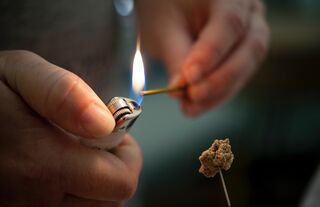
 i_need_contribute
i_need_contribute
In my body-oriented psychotherapy practice, I often refer clients to acupuncture and moxibustion when there is self-injurious behavior like cutting or burning. There is some research on the efficacy of substituting acupuncture for cutaneous self-injuries like cutting and burning. One study demonstrated that acupuncture reduced self-injurious behavior (SIB) but not depression, in adolescents (Nixon, Cheng, & Cloutier, 2003). Interestingly, researchers identified self-injurious behavior in non-human primates that targeted known acupuncture analgesia points (Tiefenbacher, Novak, Lutz, & Meyer, 2005). Nixon, Cheng, & Cloutier (2003) suggest teaching self-acupuncture as an alternative to SIB.
Combining these therapies with counseling links listening to oneself, the body-voice, and being heard by others to self-care activities and can be very effective. Machoian has worked extensively with teen girls with SIB emphasizing the relational underpinning of self-harm: the cry of “not being listened to” (2006). The substitution effect of piercing the skin or applying heat may provide a positive substitute while exploring the altered state and how it relates to the meaning of trauma. During these sessions, the patient learns new behaviors and is better able to manage and develop new approaches to physical relaxation.
Acupuncture is a 5000-year-old traditional Chinese medicine (TCM) approach to healing. It works by stimulating specific points of the body to interact with the body’s energy called qi. In the biomedical world, acupuncture has found a niche working with conventional medicine in the area of pain management and has proven to be very effective. Auricular acupuncture is a more recent innovation and applies small needles, magnets, and even “seeds” to the ears. It is a powerful physiological intervention that induces deep relaxation and reduces cravings and addiction withdrawal symptoms. Anatomically, the vagal nerve comes close to the surface in the auricle (which also accounts for the application of cranial electrical stimulation (CES) electrodes placement on the ear lobe).
Acupuncture, both auricular and full-body, is effective for conditions of dissociation, substance abuse, pain, SIB, and addictions in general. A study conducted by Hollifield, Sinclair-Lian, Warner, and Hammershlag (2007) found that acupuncture was beneficial in the treatment of PTSD. Acupuncture (and moxibustion) stimulates opioid/endocannabinoid-mediated analgesia (McPartland, 2010), likely through the same process as the burning and cutting associated with self-injury (Villalba & Harrington, 2003).

Source: katherine Hanlon/ Unsplash
Moxibustion, Trauma, and Self-Harming
Moxibustion, which often is used in conjunction with acupuncture, is the burning of the herb artemis vulgaris directly on or just above acupuncture-points on the body to create intense heat. In my clinical experience with patients who self-mutilate, the application of acupuncture and moxibustion as well as deep massage and pressure point therapies provides a therapeutic transition from self-injurious behavior via the soma, to self-caring therapy. These therapies address the psychobiological addiction by allowing a titrated period of therapeutic withdrawal from the self-injurious activities by replacing the activity with a similar method, however located outside of the spectrum of self-injury.
Behaviorally, it is helpful for the client to understand why he or she behaves in this way; identifying the need to achieve a state of consciousness as a physical need reduces the shame and guilt associated with self-injurious behaviors and also increases adherence to a program of alternative modes of self-regulation.
Auricular acupuncture is also effective for nicotine withdrawal. Nicotine blocks the HPA axis reaction and when they quit, people with PTSD experience an increase in PTSD-like symptoms, including depression. The Triple Warmer Meridian in Chinese medicine which is often a focus of needle insertion flows through the western anatomic region of the hypothalamus in the brain. The Triple Warmer governs the endocrine system and the autonomic system as well as addictions and is associated with family relationships.
References
Machoian, L. (2006). The disappearing girl: Learning the language of teenage depres- sion. New York: Penguin.
McPartland, J. M. (2010). Fibromyalgia and the endocannabinoid system. In L. Chaitow (Ed.), Fibromyalgia syndrome: A practitioner’s guide to treatment (pp. 263–277). New York: Churchill Livingstone.
Nixon, M. K., Cheng, M., & Cloutier, P. (2003). An open trial of auricular acupuncture for the treatment of repetitive self-injury in depressed adolescents. Canadian Child and Adolescent Psychiatry Review, 12(1), 10–12.
Tiefenbacher, S., Novak, M. A., Lutz, C. K., & Meyer, J. S. (2005). The physiology and neurochemistry of self-injurious behavior: A nonhuman primate model. Frontiers in Bioscience, 10, 1–11.
Villalba, V., & Harrington, C. (2003). Repetitive self–injurious behavior: The emerging potential of psychotropic intervention. Psychiatric Times 20(2). Retrieved from http://www.psychiatrictimes.com/showArticle.jhtml?articleID=175802309